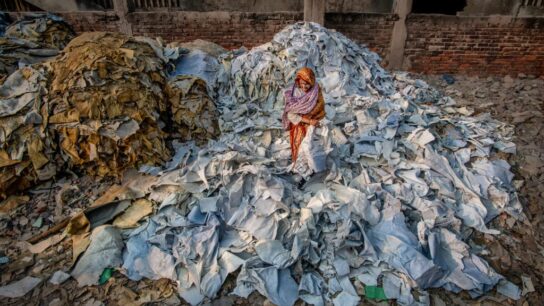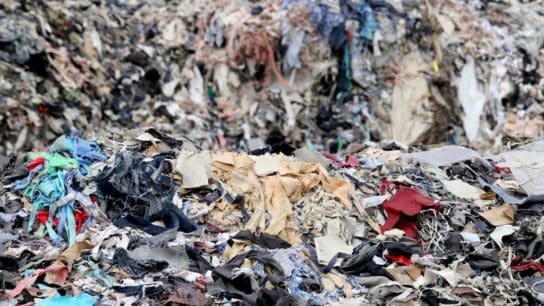Emissions in Ukraine reached a total of 230 MtCO2e since Russia’s invasion in 2022, the equivalent of the annual emissions of Austria, Hungary, Czech Republic and Slovakia combined.
—
The war in Ukraine has become the largest source of carbon emissions in the country, according to a new report released on the third anniversary of Russia’s invasion.
Emissions topped 230 metric tons of carbon dioxide equivalent (MtCO2e) at the end of the third year of conflict, an assessment by non-profit Initiative on GHG Accounting of War revealed. This is the equivalent of the annual emissions of Austria, Hungary, Czech Republic and Slovakia combined or the annual emissions of 120 million fossil fuel-powered automobiles, it said.
A team of researchers attributed the sharp rise primarily to warfare. This includes fuel-powered tanks, fortification construction, as well as the manufacturing and use of ammunition, explosives, and military equipment. They also found that the impact on climate from artillery shells remained significant throughout 2024 despite drones becoming a prominent feature of the conflict.
Reconstruction of housing, public buildings, and infrastructure came in second, contributing 27% of total emissions.
Intensified attacks on energy infrastructure, including on oil depots and oil refineries, power stations and the electricity grid accounted for 8% of the total emissions for 2024, followed by civil aviation (6%) and refugees (2%). The latter accounts for the movement of refugees from or back to Ukraine – which the authors say was “very small” last year.

A previous assessment, conducted at the war’s 18-month mark, put the country’s total emissions at 150 MtCO2e, primarily deriving from reconstruction, followed by warfare and fires.
Rise in Fires
Ukraine, which typically sees moderate fire activity, was plagued by fires in 2024 compared to the rest of Europe. These fires turned out to be the third-largest contributor to Ukraine’s total emissions for the year.
92.1 thousand hectares of land burnt in landscape fires last year, more than double the annual average of 38.3 thousand hectares in the previous two years. Deriving emissions also growing 113% compared to 2022 and 2023 combined.

The jump was largely attributed to the fact that parts of eastern Ukraine were notably drier-than-average in 2024, the hottest year on record globally, as confirmed by the National Oceanic and Atmospheric Administration’s annual climate report. This, combined with the ongoing conflict, which complicated firefighters operations, meant fires often raged uncontrollably.
“2024 was the year climate and conflict combined, leading to swathes of scorched forests far exceeding anything we’ve seen before in Ukraine and in Europe this year,” said Dutch scholar and lead author Lennard de Klerk.

Holding Russia Accountable
Ukraine’s Minister of Environmental Protection and Natural Resources, Svitlana Grynchuk, said the new assessment serves to hold Russia accountable “for the harm it is causing to all of us.” Grynchuk’s predecessor Ruslan Strilets said last year that Ukraine was preparing a “reparations case” against Russia.
Asked by Earth.Org how the Ukrainian government plans to secure reparations for the environmental damage caused by the war, a spokesperson for the Ministry of Environmental Protection and Natural Resources said it will be “extremely difficult” to hold Russia accountable as there is no international mechanism in place.
“At present, it is extremely difficult to hold Russia accountable and obtain reparations for environmental damage, especially for climate damage, as there is no relevant international procedure,” the spokesperson said. “Therefore, the first task is to adopt appropriate methodologies and procedures at the international level. Only after that will it be possible to say something concrete about obtaining reparations.”
At a social cost of US$185 per tonne of CO2, the authors put Russia’s liability after three years of war at over $42 billion. “Russia started this war and should shoulder the cost of its climate emissions,” said de Klerk.
Featured image: Ministry of Defense of Ukraine/Flickr.
More on the topic: The Environmental Impact of the War in Ukraine
This story is funded by readers like you
Our non-profit newsroom provides climate coverage free of charge and advertising. Your one-off or monthly donations play a crucial role in supporting our operations, expanding our reach, and maintaining our editorial independence.
About EO | Mission Statement | Impact & Reach | Write for us














